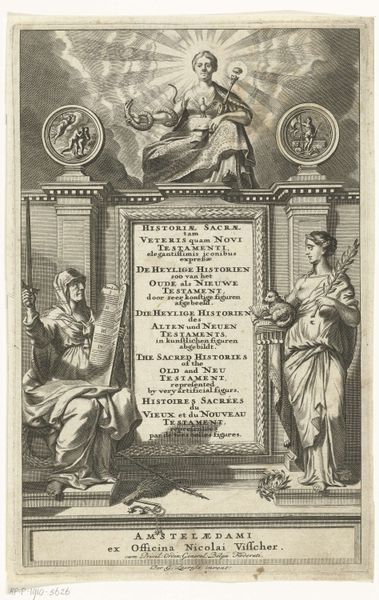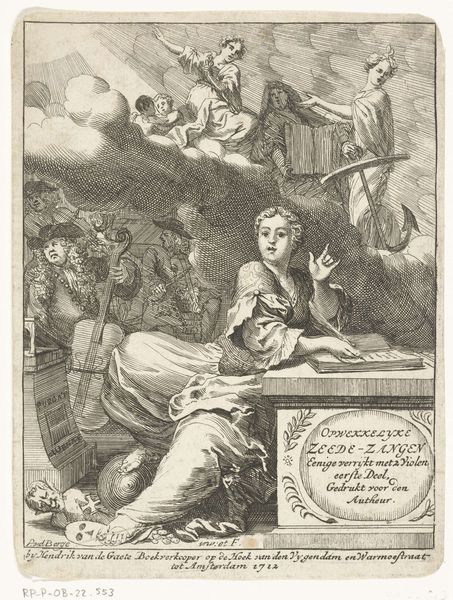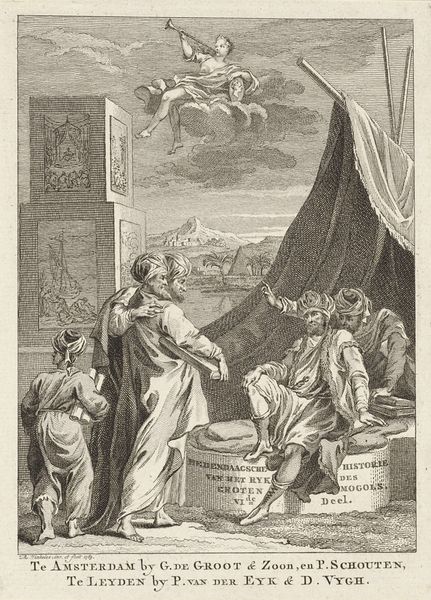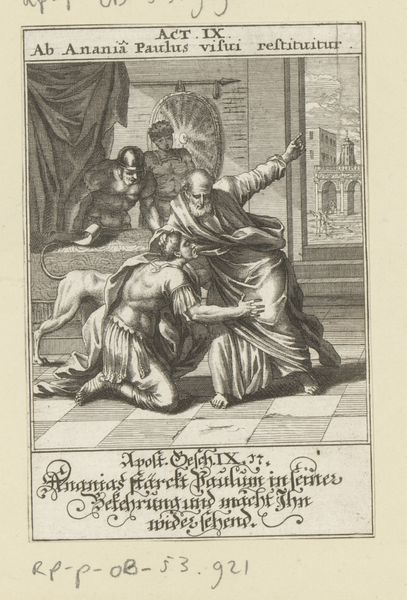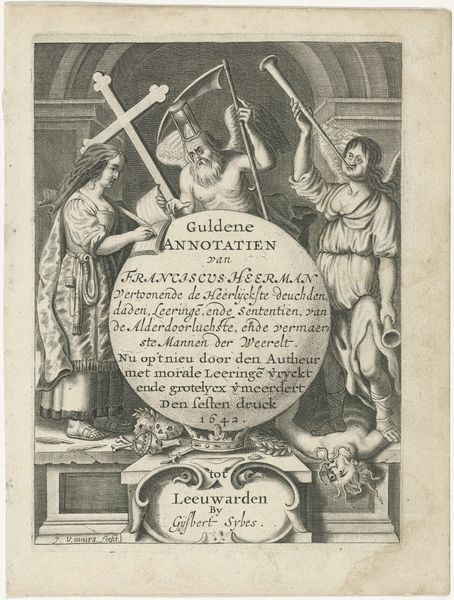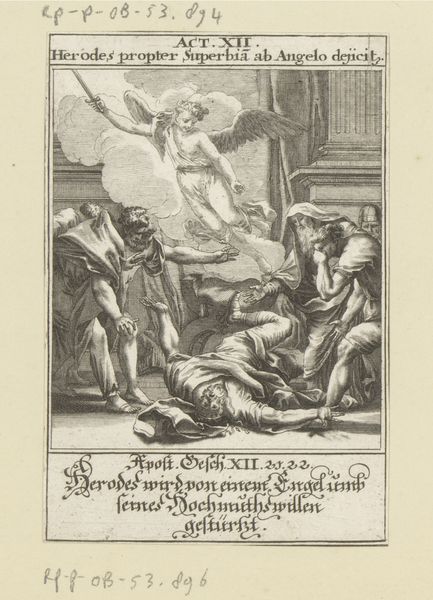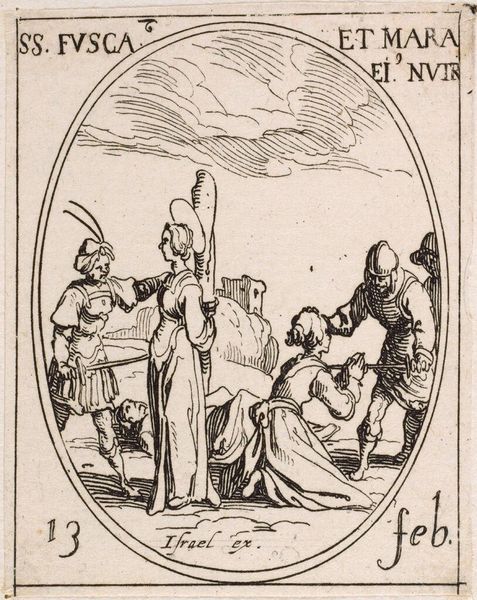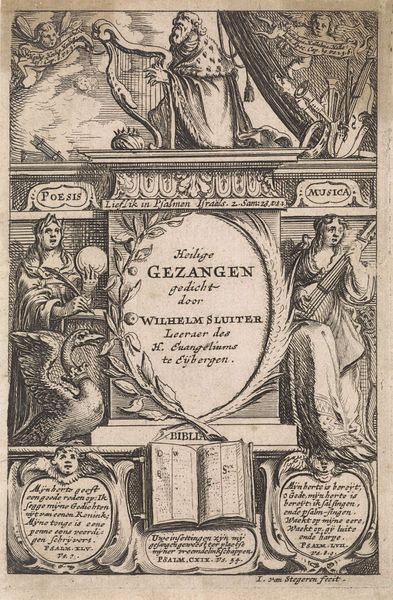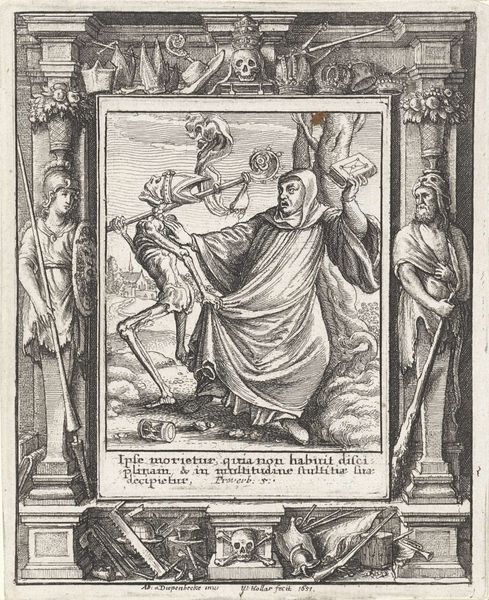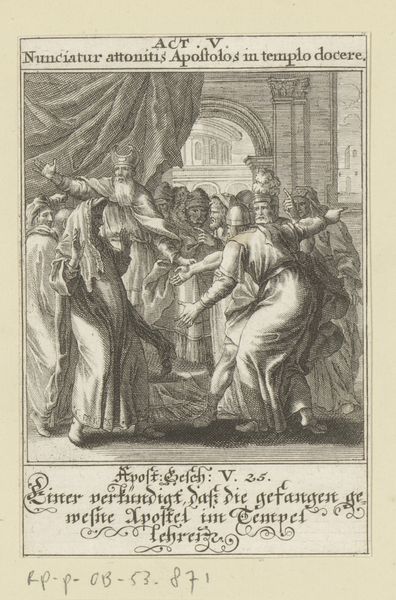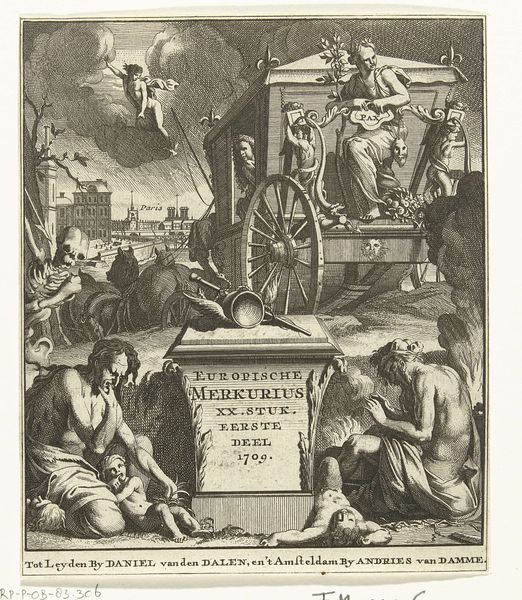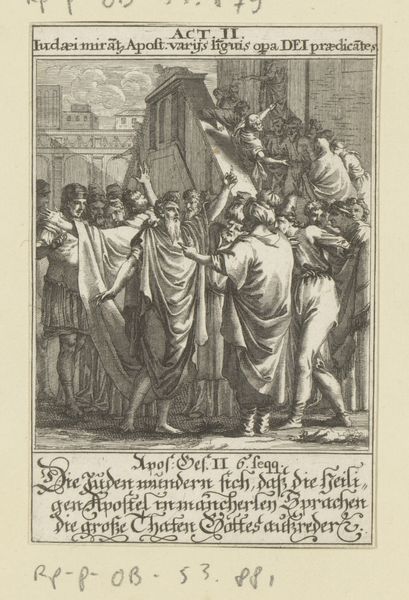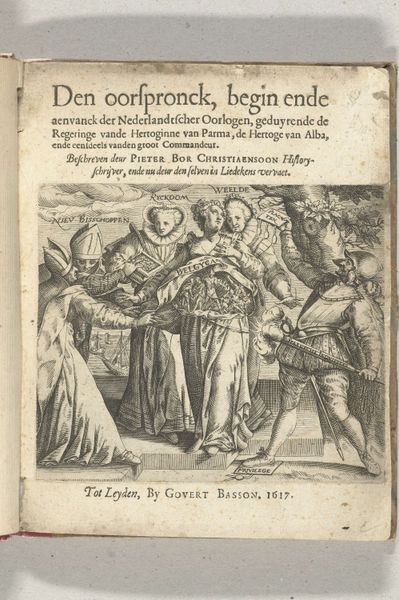
print, engraving
#
baroque
# print
#
figuration
#
history-painting
#
engraving
Dimensions: height 158 mm, width 110 mm
Copyright: Rijks Museum: Open Domain
Curator: This engraving, crafted by Reinier van Persijn around 1650, is titled "Minerva en twee geketende figuren" and currently resides in the Rijksmuseum. The print teems with baroque energy, even within the tight constraints of its monochrome palette. Editor: Wow, right off the bat, this has such an assertive presence. There's something inherently melancholic, and even melodramatic about the subjects rendered here—a sort of grandiose anguish. Curator: That "grandiose anguish" resonates strongly. Consider Minerva, the central figure – a goddess of wisdom and strategic warfare. She is flanked by chained figures on either side. Those bonds... they are laden with implications of power, knowledge, and constraint. Editor: I’m struck by the orb hovering above their heads. It’s decorated with what look like grapes or apples and ornate Latin script. The way everyone gestures toward it suggests knowledge— or at least the *pursuit* of it—is something slightly out of reach. A burden? Curator: The orb bears the title “Iustinus”, referencing the Roman historian, along with mentions of commentary from Antony Thysius. Notice too how Minerva is adorned, or rather weighed down, by the accoutrements of her role, helmet and spear and all? She embodies this intense convergence of learning and power, while those shackled seem almost crushed beneath it. Editor: The figure on the right–with wings like an angel–is especially poignant. To see divinity shackled suggests a sort of betrayal, doesn't it? Curator: Perhaps. The engraving style reinforces that somber effect; the sharp lines carve out deeply contrasting shadows, lending the scene a stark emotional depth. The very act of engraving lends it's symbolic power – think of the laborious detail required to impart even small strokes. Editor: Yeah, you feel that intensity; this wasn't just dashed off. Every line speaks to that period. The ornate embellishments in the corners – like those angelic figures below – and the very careful rendering of the subjects' postures. There is clearly more to see here than just a goddess and some bound figures. Curator: Absolutely. This work is very much rooted in its time, presenting layered commentary on wisdom, constraint, and the burdens of power, a true conversation starter on culture. Editor: Well, its density really holds up; looking closer feels more and more like entering an entirely different dimension of history and symbolism.
Comments
No comments
Be the first to comment and join the conversation on the ultimate creative platform.
